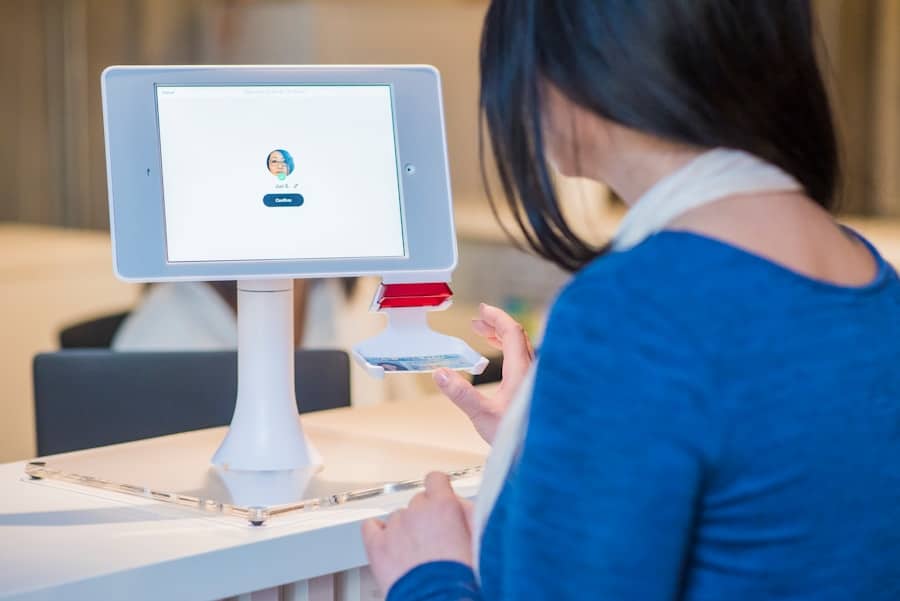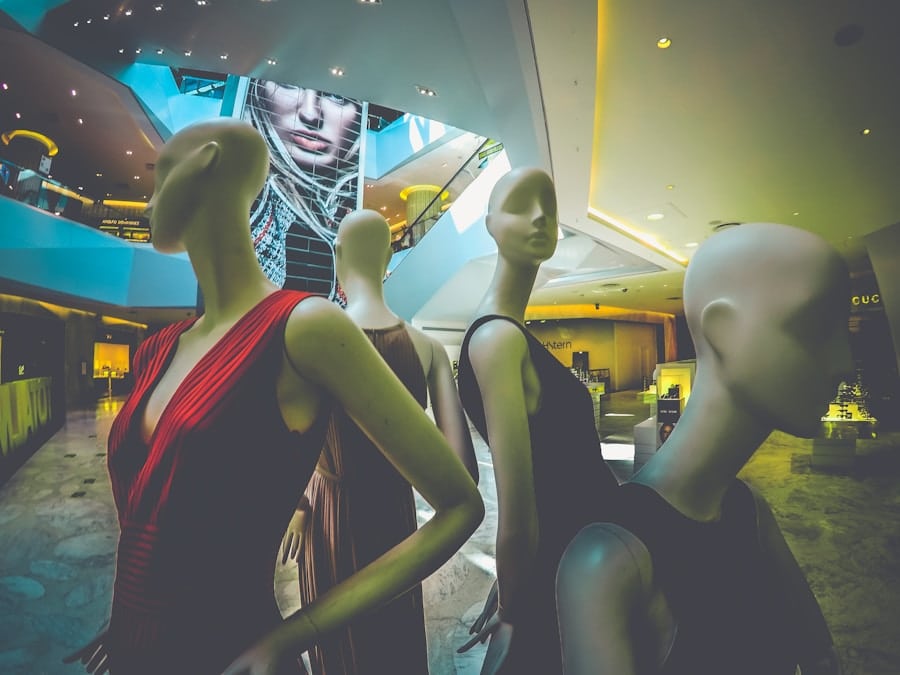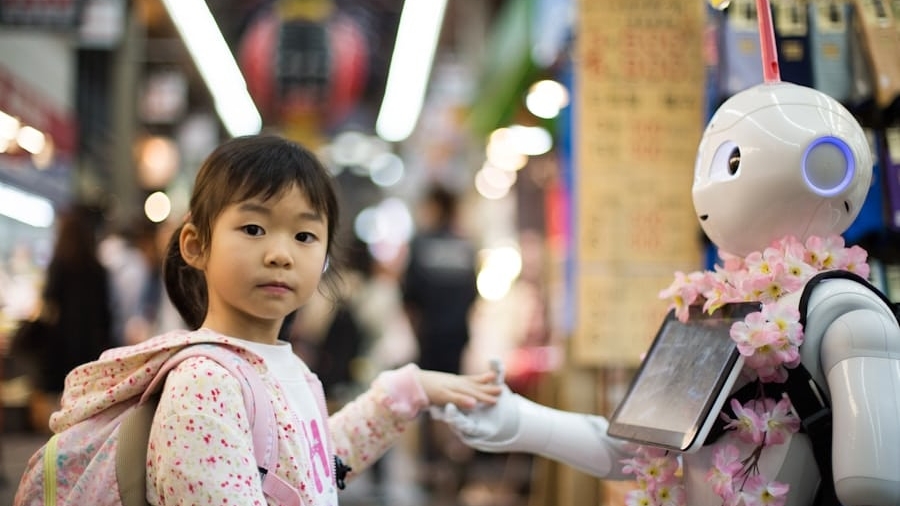The retail landscape is undergoing a profound transformation, driven by advancements in technology and changing consumer expectations. Smart retail stores, characterized by their integration of digital technologies, data analytics, and automation, are at the forefront of this evolution. These stores leverage the Internet of Things (IoT), artificial intelligence (AI), and robotics to enhance customer experiences, streamline operations, and optimize inventory management.
Within this context, human-robot collaboration emerges as a pivotal element, reshaping how retailers interact with customers and manage their workforce. Human-robot collaboration in smart retail stores encompasses a range of interactions between human employees and robotic systems designed to assist in various tasks. This collaboration can take many forms, from robots that assist customers in finding products to those that manage inventory or even handle checkout processes.
As retailers seek to improve efficiency and customer satisfaction, the integration of robots into the retail environment presents both opportunities and challenges. Understanding the dynamics of this collaboration is essential for retailers aiming to thrive in an increasingly competitive market.
Key Takeaways
- Smart retail stores are integrating human-robot collaboration to enhance customer experience and operational efficiency.
- Robots in smart retail stores are taking on tasks such as inventory management, customer service, and security.
- Human-robot collaboration in smart retail stores leads to improved productivity, cost savings, and enhanced customer satisfaction.
- Challenges of human-robot collaboration in smart retail stores include technical limitations, high initial costs, and potential job displacement.
- Future trends in human-robot collaboration in smart retail stores include more advanced AI capabilities, personalized customer interactions, and ethical considerations for robot use.
The Role of Robots in Smart Retail Stores
Robots play a multifaceted role in smart retail stores, serving as both assistants to human employees and as autonomous agents capable of performing specific tasks. One of the most visible applications of robots in retail is in customer service. For instance, companies like Lowe’s have deployed robots named “LoweBot” that roam the aisles, helping customers locate products and providing information about promotions.
These robots are equipped with advanced sensors and AI algorithms that allow them to navigate the store autonomously while interacting with customers in a friendly manner. In addition to customer service, robots are increasingly being utilized for inventory management. Retailers like Walmart have introduced autonomous robots that scan shelves to monitor stock levels and identify misplaced items.
This capability not only enhances inventory accuracy but also frees up human employees to focus on more complex tasks that require emotional intelligence and problem-solving skills. Furthermore, robots can assist in logistics within the store, such as restocking shelves or transporting goods from storage areas to the sales floor, thereby improving operational efficiency.
Advantages of Human-Robot Collaboration in Smart Retail Stores

The collaboration between humans and robots in smart retail stores offers numerous advantages that can significantly enhance operational efficiency and customer satisfaction. One of the primary benefits is the ability to streamline repetitive tasks. Robots can handle mundane activities such as restocking shelves or conducting inventory checks, allowing human employees to dedicate their time to more engaging and customer-centric roles.
This shift not only improves job satisfaction for employees but also enhances the overall shopping experience for customers. Moreover, human-robot collaboration can lead to improved accuracy and reduced errors in various processes. For example, robots equipped with advanced imaging technology can perform inventory checks with a level of precision that surpasses human capabilities.
This accuracy minimizes stock discrepancies and ensures that customers find the products they seek when they visit the store. Additionally, robots can operate around the clock without fatigue, enabling retailers to maintain consistent service levels even during peak hours or after regular business hours.
Challenges and Limitations of Human-Robot Collaboration in Smart Retail Stores
Despite the numerous advantages of human-robot collaboration, several challenges and limitations must be addressed for successful implementation in smart retail stores.
As robots take on more responsibilities traditionally held by humans, there is a fear that many employees may find themselves out of work or relegated to less desirable positions.
This concern necessitates a careful approach to workforce management, including retraining programs that equip employees with new skills relevant to an evolving retail environment. Another challenge lies in the integration of robotic systems into existing retail infrastructures. Many retailers operate on legacy systems that may not be compatible with advanced robotic technologies.
The cost of upgrading these systems can be prohibitive for smaller retailers, creating a disparity between large chains that can afford such investments and smaller businesses that struggle to keep pace with technological advancements. Additionally, ensuring seamless communication between human employees and robots is crucial; any breakdown in this collaboration can lead to confusion and inefficiencies on the sales floor.
Future Innovations and Trends in Human-Robot Collaboration in Smart Retail Stores
As technology continues to advance, the future of human-robot collaboration in smart retail stores promises exciting innovations and trends. One emerging trend is the development of more sophisticated AI algorithms that enable robots to learn from their interactions with customers and employees. This capability could lead to more personalized shopping experiences, as robots become adept at understanding individual customer preferences and behaviors over time.
Another anticipated innovation is the integration of augmented reality (AR) with robotic systems. For instance, AR glasses worn by employees could provide real-time data about inventory levels or customer preferences while they interact with robots on the sales floor. This synergy could enhance decision-making processes and improve overall efficiency in store operations.
Furthermore, advancements in robotics will likely lead to more versatile machines capable of performing a wider range of tasks, from complex customer interactions to intricate logistical operations.
Ethical and Social Implications of Human-Robot Collaboration in Smart Retail Stores

Privacy Concerns
One major concern is the privacy issues related to data collection by robotic systems. As robots gather information about customer preferences and behaviors, retailers must navigate the fine line between utilizing this data for personalized service and respecting customers’ privacy rights. Transparent data practices will be essential to build trust between retailers and consumers.
The Impact of Automation on Employment
There are broader societal implications regarding the impact of automation on employment. While robots can enhance efficiency and reduce costs for retailers, there is a pressing need for discussions about how to support workers who may be displaced by these technologies.
Supporting Workers Affected by Automation
Policymakers, businesses, and educational institutions must collaborate to create pathways for retraining and upskilling workers affected by automation in retail environments.
The Impact of Artificial Intelligence on Human-Robot Collaboration in Smart Retail Stores
Artificial intelligence serves as a cornerstone for enhancing human-robot collaboration in smart retail stores. AI algorithms enable robots to process vast amounts of data quickly, allowing them to make informed decisions based on real-time information. For example, AI-powered robots can analyze customer foot traffic patterns within a store to optimize product placement or adjust staffing levels during peak shopping times.
Moreover, AI enhances the ability of robots to engage with customers meaningfully. Natural language processing (NLP) capabilities allow robots to understand and respond to customer inquiries more effectively, creating a more interactive shopping experience. Retailers like Amazon have already begun implementing AI-driven chatbots that assist customers online; similar technologies are being adapted for use within physical stores as well.
This integration not only improves customer service but also provides valuable insights into consumer behavior that can inform future marketing strategies.
The Future of Human-Robot Collaboration in Smart Retail Stores
The future of human-robot collaboration in smart retail stores is poised for significant growth as technology continues to evolve. With advancements in robotics, AI, and data analytics, retailers have an unprecedented opportunity to enhance operational efficiency while delivering exceptional customer experiences. However, navigating the challenges associated with this transformation will require thoughtful strategies that prioritize workforce development and ethical considerations.
As retailers embrace these innovations, they must remain vigilant about the implications for their employees and customers alike. By fostering an environment where humans and robots work together harmoniously, retailers can create a shopping experience that not only meets but exceeds consumer expectations while ensuring that their workforce is equipped for the future landscape of retail. The journey toward fully realizing the potential of human-robot collaboration is just beginning, but its impact on the retail sector will undoubtedly be profound and far-reaching.
In a recent article on Enicomp, the importance of seamless customer interactions in smart retail stores was highlighted. The article, titled “Smartsender: Your Chatbot Platform for Seamless Customer Interactions”, discusses how chatbots can enhance the customer experience and improve efficiency in retail settings. This ties in with the future of human-robot collaboration in smart retail stores, as both technologies aim to streamline processes and provide a more personalized shopping experience for customers.
FAQs
What is human-robot collaboration in smart retail stores?
Human-robot collaboration in smart retail stores refers to the integration of robots into the retail environment to work alongside human employees. This collaboration aims to improve efficiency, customer service, and overall operations within the retail space.
What are the benefits of human-robot collaboration in smart retail stores?
Some of the benefits of human-robot collaboration in smart retail stores include increased productivity, improved customer experience, reduced operational costs, and the ability to handle repetitive or mundane tasks, allowing human employees to focus on more complex and value-added activities.
What are the potential challenges of human-robot collaboration in smart retail stores?
Challenges of human-robot collaboration in smart retail stores may include the initial cost of implementing the technology, concerns about job displacement, the need for proper training and maintenance of the robots, and ensuring the safety of both customers and employees in the retail environment.
How are robots being used in smart retail stores today?
Robots are being used in smart retail stores for tasks such as inventory management, customer assistance, cleaning and maintenance, and even security. Some robots are equipped with AI and machine learning capabilities to analyze customer behavior and preferences, providing valuable insights for retailers.
What is the future outlook for human-robot collaboration in smart retail stores?
The future of human-robot collaboration in smart retail stores is expected to continue to evolve, with advancements in robotics, AI, and automation. This may lead to further integration of robots into various aspects of retail operations, ultimately transforming the way retail stores operate and interact with customers.

